

|

|

|

|

|

|

|

|
|
~~~~~~ World Bibliography of Beliefs, Theories and Theologies ~ click pix to enlarge ~~~~~~ Hinduism Hinduism is a religious tradition that originated in the Indian subcontinent. Hinduism is often referred to as Sanatana Dharma by its practitioners, a Sanskrit phrase meaning "the eternal path" or "the eternal law". Hinduism is the world’s oldest major religion that is still practiced. Its earliest origins can be traced to the ancient Vedic civilization. A conglomerate of diverse beliefs and traditions, Hinduism has no single founder. It is the world’s third largest religion following Christianity and Islam, with approximately a billion adherents, of whom about 905 million live in India and Nepal. Other countries with large Hindu populations include Bangladesh, Sri Lanka, Pakistan, Indonesia, Malaysia, Singapore, Mauritius, Fiji, Suriname, Guyana, Trinidad and Tobago, United Kingdom and Canada. |

|
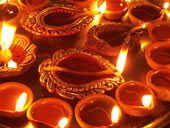
|
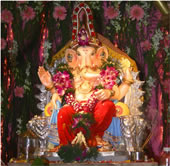
|
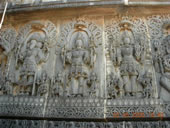
|
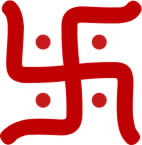
|

|

|

|

|
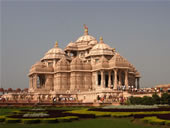
|

|
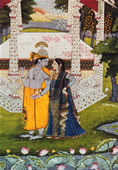
|
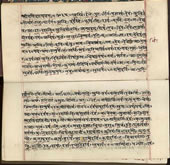
|

|
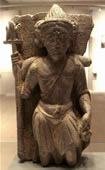
|
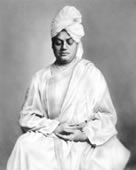
|
|
Hinduism contains a vast body of scriptures. Divided as Sruti (revealed) and Smriti (remembered) and developed over millennia, these scriptures expound on theology, philosophy and mythology, and provide spiritual insights and guidance on the practice of dharma (religious living). In the orthodox view, among such texts, the Vedas and the Upanishads are the foremost in authority, importance and antiquity. Other major scriptures include the Tantras, the sectarian Agamas, the Puras and the epics Mahabharata and Ramaya. The Bhagavad Gita, a treatise excerpted from the Mahabharata, is sometimes called a summary of the spiritual teachings of the Vedas. Etymology The Persian term Hindu is derived from Sindhu, Sanskrit for the Indus River. The Rig Veda mentions the land of the Indo-Aryans as Sapta Sindhu (the land of the seven rivers in northwestern South Asia, one of them being the Indus). This corresponds to Hapta Hindu in the Avesta (Vendidad or Videvdad: Fargard 1.18)-the sacred scripture of Zoroastrianism. The term was used for those who lived in the Indian subcontinent on or beyond the "Sindhu". Beliefs Temple carving at Hoysaleswara temple representing the Trimurti: Brahma, Shiva and Vishnu. Hinduism is an extremely diverse religion. Although some tenets of the faith are accepted by most Hindus, scholars have found it difficult to identify any doctrines with universal acceptance among all denominations. Prominent themes in Hindu beliefs include Dharma (ethics/duties), Samsara (The continuing cycle of birth, life, death and rebirth), Karma (action and subsequent reaction), Moksha (liberation from samsara), and the various Yogas (paths or practices). Concept of God Hinduism is a diverse system of thought with beliefs spanning monotheism, polytheism, panentheism, pantheism, monism and atheism. It is sometimes referred to as henotheistic (devotion to a single God while accepting the existence of other gods), but any such term is an oversimplification of the complexities and variations of belief. Most Hindus believe that the spirit or soul-the true "self" of every person, called the atman-is eternal. According to the monistic/pantheistic theologies of Hinduism (such as Advaita Vedanta school), this Atman is ultimately indistinct from Brahman, the supreme spirit. Brahman is described as "The One Without a Second;" hence these schools are called "non-dualist." The goal of life according to the Advaita school is to realize that one’s atman is identical to Brahman, the supreme soul. The Upanishads state that whoever becomes fully aware of the atman as the innermost core of one’s own self, realizes their identity with Brahman and thereby reaches Moksha (liberation or freedom). Other dualistic schools (see Dvaita and Bhakti) understand Brahman as a Supreme Being who possesses personality and worship Him or Her thus, as Vishnu, Brahma, Shiva or Shakti depending on the sect. The atman is dependent on God while Moksha depends on love towards God and on God’s grace. When God is viewed as the supreme personal being (rather than as the infinite principle) God is called Ishvara ("The Lord"), Bhagavan ("The Auspicious One"), or Parameshwara ("The Supreme Lord"). However, interpretations of Ishvara vary-ranging from non-belief such as followers of Mimamsakas, in Ishvara to identifying Brahman and Ishvara as one as in Advaita. There are also schools like the Samkhya which have atheistic leanings. Devas and avatars Krishna, the eighth incarnation (avatar) of Vishnu, has as his consort Radha. The Hindu scriptures refer to celestial entities, called Devas (or devi in feminine form; devata used synonymously for Deva in Hindi), "the shining ones", which may be translated into English as "gods" or "heavenly beings". The devas are an integral part of Hindu culture and are depicted in art, architecture and through icons, and mythological stories about them are related in the scriptures, particularly in the Indian epic poetry and Puranas. They are however often distinguished from Ishvara, a supreme personal God, with many Hindus worshiping Ishvara in a particular form as their ia devata, or chosen ideal; the choice being based upon their individual preference, and regional and family traditions. Hindu epics and the Puranas relate several episodes of the descent of God to Earth in corporeal form, in order to restore dharma in society and guide humans to moksha (liberation from the cycle of rebirth). Such an incarnation is called an avatar. The most prominent avatars are of Vishnu, and include Rama (protagonist in Ramayana) and Krishna (a central figure in the epic Mahabharata). Karma and samsara Karma translates literally as action, work or deed and can be described as the "moral law of cause and effect". According to the Upanishads, an individual, known as the jiva-atma, develops samskaras (impressions) from actions, whether physical or mental. The "linga sharira", a body more subtle than the physical one, but less subtle than the soul, retains impressions, carrying them over into the next life, establishing a unique trajectory for the individual. Thus, the concept of a universal, neutral and never-failing karma intrinsically relates to reincarnation as well as one’s personality, characteristics and family. Karma threads together the notions of free will and destiny. This cycle of action, reaction, birth, death, and rebirth is a continuum called samsara. The notion of reincarnation and karma is a strong premise in Hindu thought. The Bhagavad Gita states that: "As a person puts on new clothes and discards old and torn clothes, similarly an embodied soul enters new material bodies, leaving the old bodies.(B.G. 2:22)" Samsara provides ephemeral pleasures, which lead people to desire rebirth to enjoy the pleasures of a perishable body. However, escaping the world of samsara through moksha (liberation) is believed to ensure lasting happiness and peace. It is thought that after several reincarnations, an atman eventually seeks unity with the cosmic spirit (Brahman/Paramatman). The ultimate goal of life, referred to as moksha, nirvana or samadhi, is understood in several different ways: as the realization of one’s union with God; as realization of one’s eternal relationship with God; realization of the unity of all existence; perfect unselfishness and knowledge of the Self; attainment of perfect mental peace; or as detachment from worldly desires. Such a realization liberates one from samsara and ends the cycle of rebirth. The exact conceptualization of moksha differs among the various Hindu schools of thought. For example, Advaita Vedanta holds that after attaining moksha an atman no longer identifies itself with an individual but as identical with Brahman in all respects. The followers of Dvaita (dualistic) schools identify themselves as part of Brahman and after attaining moksha expect to spend eternity in a loka (heaven), in the company of their chosen form of Ishvara. Thus, it is said, the followers of dvaita wish to "taste sugar," while the followers of Advaita wish to "become sugar." The goals of life Main article: Purusharthas Classical Hindu thought accepts two main life-long dharmas: Grihastha Dharma and Sannyasin Dharma. The Grihastha Dharma recognize four goals known as the puruharthas. They are: Kama: Sensual pleasure and enjoyment Artha: Material prosperity and success Dharma: Correct action, in accordance with one’s particular duty and scriptural laws Moksha: Liberation from the cycle of samsara Among these, dharma and moksha play a special role: dharma must dominate an individual’s pursuit of kama and artha while seeing moksha, at the horizon. The Sannyasin Dharma recognizes, but renounces Kama, Artha and Dharma, focusing entirely on Moksha. As described below, the Grihastha Dharma eventually enters this stage. However, some enter this stage immediately from whichever stage they may be in. Yoga Swami Vivekananda, shown here practicing meditation, was a Hindu guru (teacher) recognized for his inspiring lectures on topics such as yoga. In whatever way a Hindu defines the goal of life, there are several methods (yogas) that sages have taught for reaching that goal. A practitioner of yoga is called a yogi. Texts dedicated to Yoga include the Bhagavad Gita, the Yoga Sutras, the Hatha Yoga Pradipika and, as their philosophical and historical basis, the Upanishads. Paths one can follow to achieve the spiritual goal of life (moksha, samadhi, or nirvana) include: Bhakti Yoga (the path of love and devotion), Karma Yoga (the path of right action), Raja Yoga (the path of meditation) and Jñana Yoga (the path of wisdom). An individual may prefer one or some yogas over others according to his or her inclination and understanding. For instance some devotional schools teach that bhakti is the only practical path to achieve spiritual perfection for most people, based on their belief that the world is currently in the age of Kali yuga (one of four epochs part of the Yuga cycle). Practice of one yoga does not exclude others. Many schools believe that the different yogas naturally blend into and aid other yogas. For example, the practice of jnana yoga, is thought to inevitably lead to pure love (the goal of bhakti yoga), and vice versa. Someone practicing deep meditation (such as in raja yoga) must embody the core principles of karma yoga, jnana yoga and bhakti yoga, whether directly or indirectly. History Sacred Mount Kailash in Tibet is regarded as the spiritual abode of Shiva. The earliest evidence for elements of Hinduism date back to the late Neolithic to the early Harappan period (5500-2600BCE). The beliefs and practices of the pre-classical era (1500-500BCE) are called the "historical Vedic religion". Modern Hinduism grew out of the Vedas, the oldest of which is the Rigveda, dated to 1700-1100BCE. The Vedas center on worship of deities such as Indra, Varuna and Agni, and on the Soma ritual. They performed fire-sacrifices, called yajña and chanted Vedic mantras but did not build temples or icons. The oldest Vedic traditions exhibit strong similarities to Zoroastrianism and with other Indo-European religions. During the Epic and Puranic periods, the earliest versions of the epic poems Ramayana and Mahabharata were written roughly from 500-100BCE, although these were orally transmitted for centuries prior to this period. The epics contain mythological stories about the rulers and wars of ancient India, and are interspersed with religious and philosophical treatises. The later Puranas recount tales about devas and devis, their interactions with humans and their battles against demons. Three major movements underpinned the naisance of a new epoch of Hindu thought: the advents and spread of Upanishadic, Jaina, and Buddhist philosophico-religious thought throughout the broader Indian landmass. The Upanishads, Mahavira(founder of Jainism) and Buddha(founder of Buddhism) taught that to achieve moksha or nirvana, one did not have to accept the authority of the Vedas or the caste system. Buddha went a step further and claimed that the existence of a Self/soul or God was unnecessary. Buddhism and Jainism adapted elements of Hinduism into their beliefs. Buddhism (or at least Buddhistic Hinduism) peaked during the reign of Asoka the Great of the Mauryan Empire, who unified the Indian subcontinent in the 3rd century BCE. After 200CE, several schools of thought were formally codified in Indian philosophy, including Samkhya, Yoga, Nyaya, Vaisheshika, Purva-Mimamsa and Vedanta. Charvaka, the founder of an atheistic materialist school, came to the fore in North India in the sixth century BCE. Between 400BCE and 1000CE, Hinduism expanded at the expense of Buddhism. Akshardham Temple in New Delhi.Though Islam came to India in the early 7th century with the advent of Arab traders and the conquest of Sindh, it started to become a major religion during the later Muslim conquest in the Indian subcontinent. During this period Buddhism declined rapidly and many Hindus converted to Islam. Some Muslim rulers such as Aurangzeb destroyed Hindu temples and persecuted non-Muslims, while others, such as Akbar, were more tolerant. Hinduism underwent profound changes in large part due to the influence of the prominent teachers Ramanuja, Madhva, and Chaitanya. Followers of the Bhakti movement moved away from the abstract concept of Brahman, which the philosopher Adi Shankara consolidated a few centuries before, with emotional, passionate devotion towards the more accessible avatars, especially Krishna and Rama. Indology as an academic discipline of studying Indian culture from a European perspective was established in the 19th century, led by scholars such as Max Müller and John Woodroffe. They brought Vedic, Puranic and Tantric literature and philosophy to Europe and the United States. At the same time, societies such as the Brahmo Samaj and the Theosophical Society attempted to reconcile and fuse Abrahamic and Dharmic philosophies, endeavouring to institute societal reform. This period saw the emergence of movements which, while highly innovative, were rooted in indigenous tradition. They were based on the personalities and teachings of individuals, as with Shri Ramakrishna and Ramana Maharshi. Prominent Hindu philosophers, including Sri Aurobindo and Swami Prabhupada (founder of ISKCON), translated, reformulated and presented Hinduism’s foundational texts for contemporary audiences in new iterations, attracting followers and attention in India and abroad. Others such as Swami Vivekananda, Paramahansa Yogananda, B.K.S. Iyengar and Swami Rama have also been instrumental in raising the profiles of Yoga and Vedanta in the West. Scriptures and theology Sruti, Smriti, and Hindu philosophy The Rig Veda is one of the oldest religious texts. This Rig Veda manuscript is in DevanagariHinduism is based on "the accumulated treasury of spiritual laws discovered by different persons in different times." The scriptures were transmitted orally in verse form to aid memorization, for many centuries before they were written down. Over many centuries, sages refined the teachings and expanded the canon. In post-Vedic and current Hindu belief, most Hindu scriptures are not typically interpreted literally. More importance is attached to the ethics and metaphorical meanings derived from them. Most sacred texts are in Sanskrit. The texts are classified into two classes: Shruti and Smriti. Shruti (lit: that which is heard) refers to the Vedas which form the earliest record of the Hindu scriptures. While many Hindus revere the Vedas as eternal truths revealed to ancient sages (?is), some devotees do not associate the creation of the Vedas with a God or person. They are thought of as the laws of the spiritual world, which would still exist even if they were not revealed to the sages. Hindus believe that because the spiritual truths of the Vedas are eternal, they continue to be expressed in new ways. There are four Vedas (called ?g-, Sama- Yajus- and Atharva-). The Rigveda is the first and most important Veda. Each Veda is divided into four parts: the primary one, the Veda proper, being the Sa?hita, which contains sacred mantras. The other three parts form a three-tier ensemble of commentaries, usually in prose and are believed to be slightly later in age than the Sa?hita. These are: the Brahma?as, Ara?yakas, and the Upanishads. The first two parts were subsequently called the Karmaka?a (ritualistic portion), while the last two form the Jñanaka?a (knowledge portion). While the Vedas focus on rituals, the Upanishads focus on spiritual insight and philosophical teachings, and discuss Brahman and reincarnation. The Naradeya Purana describes the mechanics of the cosmos. Depicted here are Vishnu with his consort Lakshmi resting on Shesha Nag. Narada and Brahma are also pictured.Hindu texts other than the Shrutis are collectively called the Smritis (memory). The most notable of the smritis are the epics, which consist of the Mahabharata and the Ramaya?a. The Bhagavad Gita is an integral part of the Mahabharata and one of the most popular sacred texts of Hinduism. It contains philosophical teachings from Krishna, an incarnation of Vishnu, told to the prince Arjuna on the eve of a great war. The Bhagavad Gita is described as the essence of the Vedas. The Smritis also include the Pura?as, which illustrate Hindu ideas through vivid narratives. There are texts with a sectarian nature such as Devi Mahatmya, the Tantras, the Yoga Sutras, Tirumantiram, Shiva Sutras and the Hindu Agamas. A more controversial text, the Manusmriti, is a prescriptive lawbook which epitomizes the societal codes of the caste system. Practices A large Ganesha murti from a Ganesh Chaturthi festival in MumbaiMain articles: Puja, Yajna, Murti, Mandir, Hindu iconography, Japa, and Mantra Hindu practices generally involve seeking awareness of God and sometimes also seeking blessings from Devas. Therefore, Hinduism has developed numerous practices meant to help one think of divinity in the midst of everyday life. Hindus can engage in puja (worship or veneration),) either at home or at a temple. At home, Hindus often create a shrine with icons dedicated to the individual’s chosen form(s) of God. Temples are usually dedicated to a primary deity along with associated subordinate deities though some commemorate multiple deities. Visiting temples is not obligatory. In fact, many visit temples only during religious festivals. Hindus perform their worship through icons (murtis). The icon serves as a tangible link between the worshiper and God. The image is often considered a manifestation of God, since God is immanent. The Padma Purana states that the murti is not to be thought of as mere stone or wood but as a manifest form of the Divinity. A few Hindu sects, such as the Arya Samaj, do not believe in worshiping God through icons. Hinduism has a developed system of symbolism and iconography to represent the sacred in art, architecture, literature and worship. These symbols gain their meaning from the scriptures, mythology, or cultural traditions. The syllable Om (which represents the Parabrahman) and the Swastika sign (which symbolizes auspiciousness) have grown to represent Hinduism itself, while other markings such as tilaka identify a follower of the faith. Hinduism associates many symbols, which include the lotus, chakra and veena, with particular deities. Mantras are invocations, praise and prayers that through their meaning, sound, and chanting style help a devotee focus the mind on holy thoughts or express devotion to God/the deities. Many devotees perform morning ablutions at the bank of a sacred river while chanting the Gayatri Mantra or Mahamrityunjaya mantras. The epic Mahabharata extolls Japa (ritualistic chanting) as the greatest duty in the Kali Yuga (what Hindus believe to be the current age). Many adopt Japa as their primary spiritual practice. Rituals Diwali, the festival of lights, is a prime festival of Hinduism. Shown here are traditional Diyas that are often lit during DiwaliThe vast majority of Hindus engage in religious rituals on a daily basis. Most Hindus observe religious rituals at home. However, observation of rituals greatly vary among regions, villages, and individuals. Devout Hindus perform daily chores such as worshiping at the dawn after bathing (usually at a family shrine, and typically includes lighting a lamp and offering foodstuffs before the images of deities), recitation from religious scripts, singing devotional hymns, meditation, chanting mantras, reciting scriptures etc. A notable feature in religious ritual is the division between purity and pollution. Religious acts presuppose some degree of impurity or defilement for the practitioner, which must be overcome or neutralised before or during ritual procedures. Purification, usually with water, is thus a typical feature of most religious action. Other characteristics include a belief in the efficacy of sacrifice and concept of merit, gained through the performance of charity or good works, that will accumulate over time and reduce sufferings in the next world. Vedic rites of fire-oblation (yajna) are now only occasional practices although they are highly revered in theory. In Hindu wedding and burial ceremonies, however, the yajña and chanting of Vedic mantras are still the norm. Occasions like birth, marriage, and death involve what are often elaborate sets of religious customs. In Hinduism, life-cycle rituals include Annaprashan (a baby’s first intake of solid food), Upanayanam ("sacred thread ceremony" undergone by upper-caste children at their initiation into formal education.), Shraadh (ritual of treating people to feasts in the name of the deceased). For most people in India, the betrothal of the young couple and the exact date and time of the wedding are matters decided by the parents in consultation with astrologers. On death, cremation is considered obligatory for all except sanyasis, hijra, and children under five. Cremation is typically performed by wrapping the corpse in cloth and burning it on a pyre. Pilgrimage and festivals The largest religious gathering on Earth. Around 70 million Hindus participated in the Kumbh Mela at Prayag, India.Pilgrimage is not mandatory in Hinduism though many adherents undertake them. Hindus recognise several Indian holy cities, including Allahabad, Haridwar, Varanasi, and Vrindavan. Notable temple cities include Puri, which hosts a major Vaishnava Jagannath temple and Rath Yatra celebration; Tirumala - Tirupati, home to the Tirumala Venkateswara Temple; and Katra, home to the Vaishno Devi temple. The four holy sites Puri, Rameswaram, Dwarka, and Badrinath (or alternatively the Himalayan towns of Badrinath, Kedarnath, Gangotri, and Yamunotri) compose the Char Dham (four abodes) pilgrimage circuit. The Kumbh Mela (the "pitcher festival") is one of the holiest of Hindu pilgrimages that is held every four years; the location is rotated among Allahabad, Haridwar, Nashik, and Ujjain. Another important set of pilgrimages are the Shakti Peethas, where the Mother Goddess is worshipped, the two principal ones being Kalighat and Kamakhya. Hinduism has many festivals throughout the year. The Hindu calendar usually prescribe their dates. The festivals typically celebrate events from Hindu mythology, often coinciding with seasonal changes. There are festivals which are primarily celebrated by specific sects or in certain regions of the Indian subcontinent. Some widely observed Hindu festivals are Maha Shivaratri, Holi, Ram Navami, Krishna Janmastami,Ganesh Chaturthi, Dussera or Durga Puja, Diwali (the festival of lights). Society Denominations Shiva as Nataraja, Freer Gallery, Washington D.CHinduism has no central doctrinal authority and many practising Hindus do not claim to belong to any particular denomination. However, academics categorize contemporary Hinduism into four major denominations: Vaishnavism, Shaivism, Shaktism and Smartism. The denominations differ primarily in the God worshipped as the Supreme One and in the traditions that accompany worship of that God. Vaishnavas worship Vishnu as the supreme God; Shaivites worship Shiva as the supreme; Shaktas worship Shakti (power) personified through a female divinity or Mother Goddess, Devi; while Smartists believe in the essential oneness of five deities Shanmata as personifications of the Supreme. Other denominations like Ganapatya (the cult of Ganesha) and Saura (Sun worship) are not so widespread. There are movements that are not easily placed in any of the above categories, such as Swami Dayananda Saraswati’s Arya Samaj, which rejects image worship and veneration of multiple deities. It focuses on the Vedas and the Vedic fire sacrifices (yajña). The Tantric traditions have various sects, as Banerji observes: " Tantras are ... also divided as astika or Vedic and nastika or non-Vedic. In accordance with the predominance of the deity the astika works are again divided as Sakta (Shakta), Saiva (Shaiva), Saura, Ga?apatya and Vai?ava (Vaishnava). " As in every religion, some view their own denomination as superior to others. However, many Hindus consider other denominations to be legitimate alternatives to their own. Heresy is therefore generally not an issue for Hindus. Ashramas Traditionally the life of a Hindu is divided into four Ashramas (phases or stages; unrelated meanings include monastery). The first part of one’s life, Brahmacharya, the stage as a student, is spent in celibate, controlled, sober and pure contemplation under the guidance of a Guru, building up the mind for spiritual knowledge. Grihastha is the householder’s stage, in which one marries and satisfies kama and artha in one’s married and professional life respectively (see the goals of life). The moral obligations of a Hindu householder include supporting one’s parents, children, guests and holy figures. Vanaprastha, the retirement stage, is gradual detachment from the material world. This may involve giving over duties to one’s children, spending more time in religious practices and embarking on holy pilgrimages. Finally, in Sannyasa, the stage of asceticism, one renounces all worldly attachments to secludedly find the Divine through detachment from worldly life and peacefully shed the body for Moksha. Monasticism Main article: Sannyasa Some Hindus choose to live a monastic life (Sannyasa) in pursuit of liberation or another form of spiritual perfection. Monastics commit themselves to a life of simplicity, celibacy, detachment from worldly pursuits, and the contemplation of God. A Hindu monk is called a sanyasi, sadhu, or swami. A female renunciate is called a sanyasini. Renunciates receive high respect in Hindu society because their outward renunciation of selfishness and worldliness serves as an inspiration to householders who strive for mental renunciation. Some monastics live in monasteries, while others wander from place to place, trusting in God alone to provide for their needs. It is considered a highly meritorious act for a householder to provide sadhus with food or other necessaries. Sadhus strive to treat all with respect and compassion, whether a person may be poor or rich, good or wicked, and to be indifferent to praise, blame, pleasure, and pain. Varnas and the caste system Main article: Varna in Hinduism Hindu society has traditionally been categorized into four classes, called Varnas (Sanskrit: "colour, form, appearance"); the Brahmins: teachers and priests; the Kshatriyas: warriors, nobles, and kings; the Vaishyas: farmers, merchants, and businessmen; and the Shudras: servants and labourers. Hindus and scholars debate whether the caste system is an integral part of Hinduism sanctioned by the scriptures or an outdated social custom. Although the scriptures, since the Rigveda (10.90), contain passages that clearly sanction the Varna system, they contain indications that the caste system is not an essential part of the religion. Both sides in the debate can find scriptural support for their views. The oldest scriptures, the Vedas, strongly sustain the division of society into four classes (varna) but place little emphasis on the caste system, showing that each individual should find his strengths through different ways such as his astrological signs, actions, personality, and appearance, and do his job for the good of that individual as well as society. Being casted into a class because of what parents he was born from was a political problem and not from the actual science of the religion. A verse from the Rig Veda indicates that a person’s occupation was not necessarily determined by that of his family: " "I am a bard, my father is a physician, my mother’s job is to grind the corn." (Rig Veda 9.112.3) " In the Vedic Era, there was no prohibition against the Shudras listening to the Vedas or participating in any religious rite, as was the case in the later times. Some mobility and flexibility within the varnas challenge allegations of social discrimination in the caste system, as has been pointed out by several sociologists. Many social reformers, including Mahatma Gandhi and B. R. Ambedkar, criticized caste discrimination. The religious teacher Sri Ramakrishna (1836-1886) taught that " "Lovers of God do not belong to any caste . . . . A brahmin without this love is no longer a brahmin. And a pariah with the love of God is no longer a pariah. Through bhakti (devotion to God) an untouchable becomes pure and elevated." " Ahimsa and vegetarianism Main articles: Ahimsa, Sacred cow, and Vegetarianism and religion Hindus advocate the practice of ahi?sa (non-violence) and respect for all life because divinity is believed to permeate all beings, including plants and non-human animals. The term ahi?sa appears in the Upanishads, the epic Mahabharata and Ahi?sa is the first of the five Yamas (vows of self-restraint) in Patanjali’s Yoga Sutras. In accordance with ahi?sa, many Hindus embrace vegetarianism to respect higher forms of life. While vegetarianism is not a requirement, it is recommended for a satvic (purifying) lifestyle. Estimates of the number of lacto vegetarians in India (includes inhabitants of all religions) vary between 20% and 42%. The food habits vary with the community and region, for example some castes having fewer vegetarians and coastal populations relying on seafood. Some Hindus avoid onion and garlic, which are regarded as rajasic foods. Some avoid meat on specific holy days. Observant Hindus who do eat meat almost always abstain from beef. The largely pastoral Vedic people and subsequent generations relied heavily on the cow for protein-rich milk and dairy products, tilling of fields and as a provider of fuel and fertilizer. Thus, it was identified as a caretaker and a maternal figure. Hindu society honors the cow as a symbol of unselfish giving. Cow-slaughter is legally banned in almost all states of India. Conversion See also: List of converts to Hinduism Concepts of conversion, evangelization, and proselyzation are absent from Hindu literature and in practice have never played more than a significant role, though acceptance of willing converts is becoming more common. Early in its history, in the absence of other competing religions, Hindus considered everyone they came across as Hindus (Sanathan Dharm) and expected everyone they met to be Hindus. Hence, there was no need to convert into Hinduism. With the advent and rise of hierarchical and heridiatry caste system, conversion into Hinduism became problematic. As a persons position and status in society, under the caste system, was largely determined by birth, the open theory of conversion into Hinduism under Sanathan Dharm became a closed by-birth-only theory under the caste system. Although, the caste system still permitted assimilation of migrating communities into Hinduism over several generations. The modern view of conversions into Hinduism is influenced by the demise of caste system combined with the persistence of age old ideas of Sanathan Dharm. Hindus today continue to be influenced by historical ideas of acceptability of conversion. Hence, many Hindus continue to believe that Hinduism is an identity that can only be had from birth, while many others continue to believe that anyone who follows Hindu beliefs and practices is a Hindu, and many believe in some form of both theories. However, as a reaction to perceived and actual threat of evangelization, prozelyzation, and conversion activities of other major religions many modern Hindus are opposed to the idea of conversion from (any) one religion to (any) another per se. Hindus in Western countries generally accept and welcome willing converts; while as, in India acceptance of willing converts is becoming more common. With the rise of Hindu Revivalist movements, reconversions into Hinduism have also picked up pace. Reconversions are well accepted since conversion out of Hinduism is not recognized. Conversion into Hinduism through marriage is well accepted and often expected in order to enable the non-Hindu partner to fully participate in their spiritual, religious, and cultural roles within the larger Hindu family and society. There is no formal process for converting to Hinduism, although in many traditions a ritual called diksha ("initiation") marks the beginning of spiritual life after conversion and a ritual called suddhi("purification") marks the return to spiritual life after reconversion. Most Hindu sects do not seek converts because they believe that the goals of spiritual life can be attained through any religion, as long as it is practiced sincerely. However, some Hindu sects and affiliates such as Vedanta Society, Arya Samaj, International Society for Krishna Consciousness, and the Self-Realization Fellowship accept those who have a desire to follow Hinduism. In general, Hindu view of religious freedom is not based on the freedom to proselytize, but the right to retain one’s religion and not be subject to proselyzation. Hindu leaders are advocating for changing the existing formulation of the freedom of religion clause in the Universal Declaration of Human Rights since it favors religions which proselytize |
©